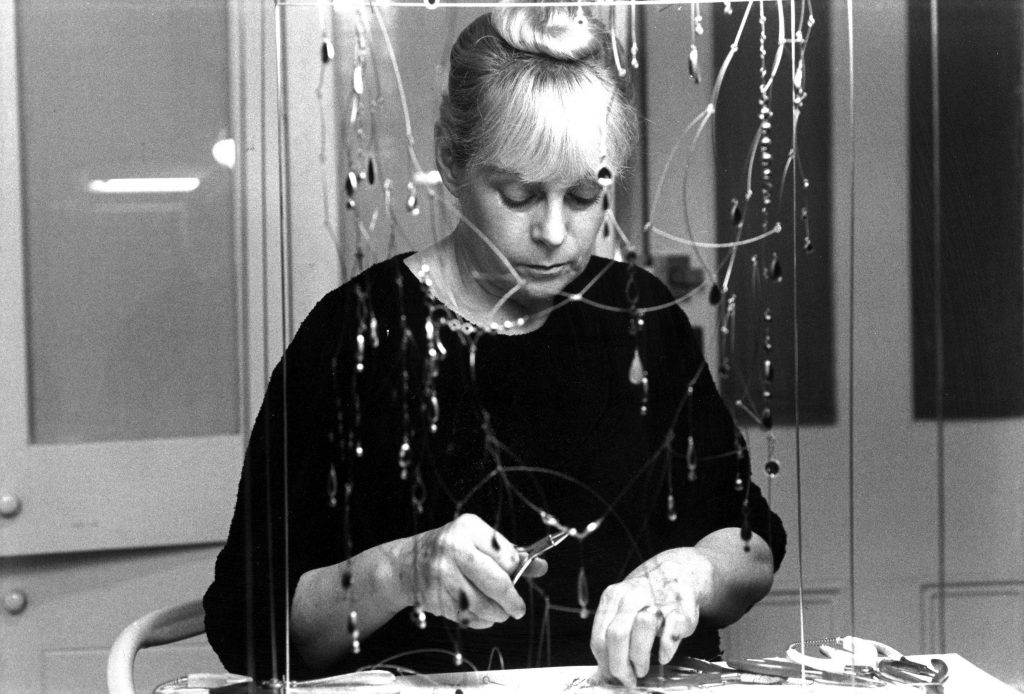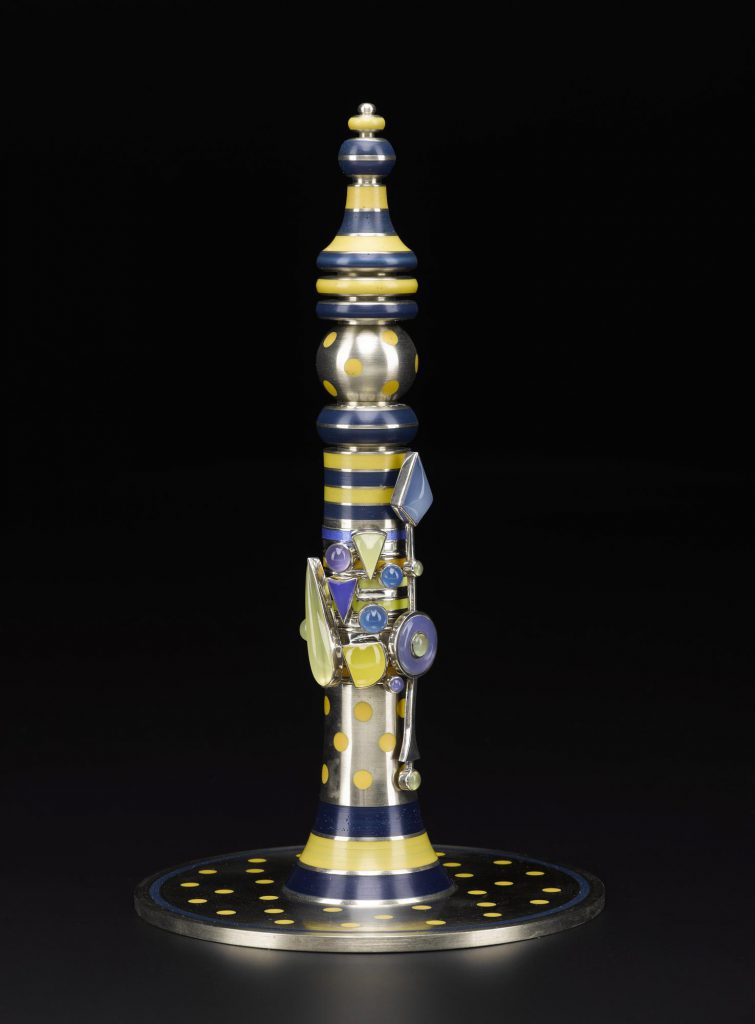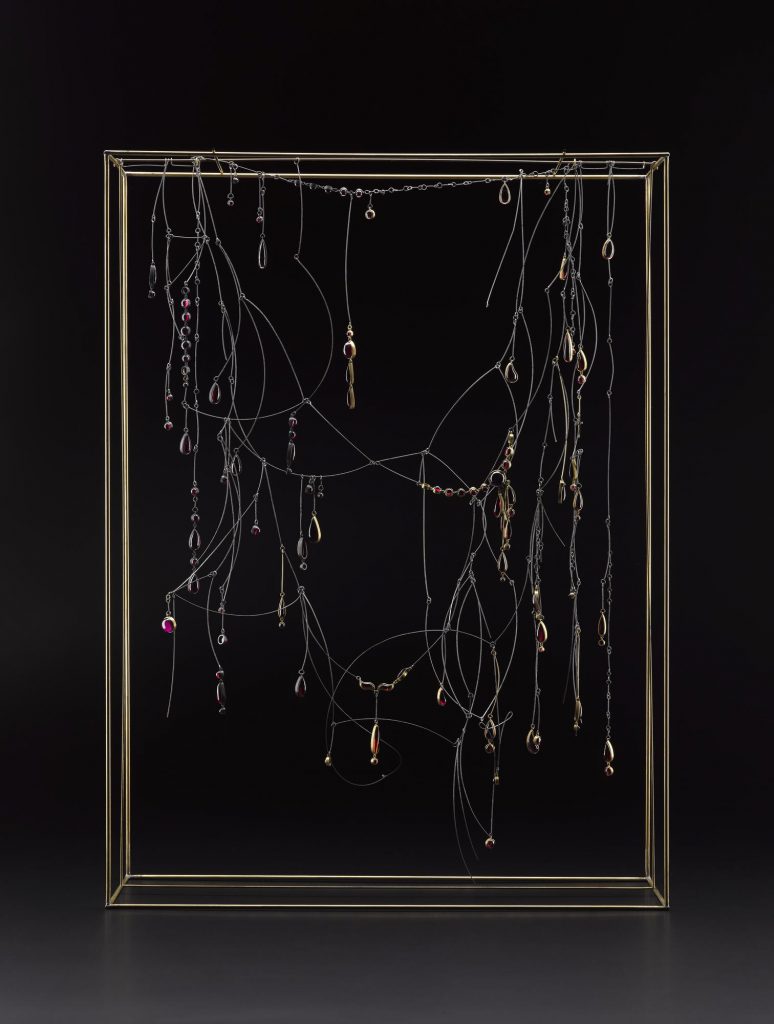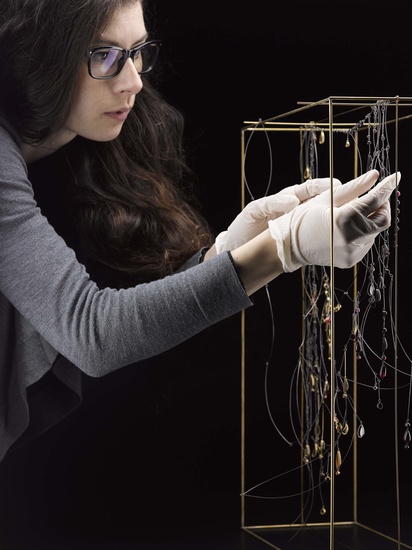Displayed within its own special case within the gallery Making & Creating, is a unique jewel which was commissioned by National Museums Scotland in 1997 and is one of my favourite pieces in our Contemporary Jewellery Collection. It is a piece that focuses upon grief and loss, devotion and memorialisation. An artistic jewel, that though dedicated to a work of art that responded to the death and destruction wrought by war, and the grief that was experienced thereafter, I find is especially pertinent today during this time when we are universally experiencing loss on a global scale.

Wendy Ranshaw’s Requiem Necklace for Guernica was one of the last ten pieces she created as part of her seminal Picasso’s Ladies series. For a period of over ten years she dedicated herself to imagining and then realising sixty-six individual jewels that responded directly to Picasso’s depictions of the women in his life. The forms and colours were directly drawn from the paintings themselves, some abstracted, others with a clear correlation. For example, sat within a neighbouring case is a Ring Set for ‘Women Sitting at the Window (Femme assise devant la fenêtre), 1937′, and is one of the first ten that she made. This piece with its fifteen finger rings on a sculptural stand, reflects the way Picasso created his vision of Marie-Thérèse Walter, his then lover and model. Her body is made up with varying geometric forms, that we can see echoed in the cabochons of the rings. And the colour treatment and pattern on the stand, matches the one he employed, of blue and yellow with polka dots to shade her hands.

However, Requiem is different. It is not a jewel for a beloved wife, lover or muse. As Ramshaw herself explained to my mentor Dr Beatriz Chadour-Sampson, when she interviewed her for the publication around the series, this piece is a “universal requiem not only for the women of Guernica, but for all women”. Picasso painted Guernica, in 1937, the same year he painted Marie-Thérèse; in response to the death and destruction wrought by the German bombing of the Basque town that year. A plea against the barbarity and terror of war, his monumental mural for the Spanish Pavilion at the International Exposition in Paris in 1937, with it writhing figures in muted tones distilled the essence of the horror of conflict. And is now regarded as an emblem for the devastating tragedies which took place in the 20th Century.

Ramshaw’s response to such a powerful image, was to reflect upon the idea of loss conveyed within its narrative, and to create a “memorial piece, inspired by devotional altars” as well as by “reliquaries found in churches or in the home”. The work is a delicate cobweb of wires, hung in a seemingly disordered state within a brass frame, echoing the anxiety and inner turbulence we feel at times of stress. The garnets signify the drops of blood that have been shed in conflict, and by those who strive to protect us all at times of uncertainty, just as we are seeing today. It is, as she describes it, a “Mass in memory of the death of those who are loved, the suffering of those who are torn and bleed from the body or the heart”.

As with all devotional objects, we are drawn to them even more at times of political and social unrest, conflict and death. They bring solace and hope, and in some like with Requiem, we find a way to see beauty within the disorder we face. For myself this work represents the truly creative spirit of the women who conceived it. Who strove to push the boundaries of jewellery and art. And create a work that would resonate for me on a very personal level.
